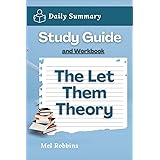Getting Ahead of Your Finances for 2025: Navigating Economic Shifts
The financial landscape is constantly evolving, presenting new challenges and opportunities for individuals aiming to secure their financial future. Staying informed and proactive is essential to navigate these shifts successfully. Many people find themselves overwhelmed by conflicting financial advice, making it difficult to discern the best path forward for their personal wealth.
By understanding key economic trends and implementing strategic financial planning, individuals can confidently position themselves for growth and stability. As the video above discusses, preparing for upcoming changes is not just prudent; it is absolutely necessary for maintaining financial health. This detailed guide expands on those crucial insights, offering actionable strategies to help you get ahead of your finances for 2025.
1. Understanding the Evolving Economic Landscape for 2025
Approaching a new year, it becomes imperative to grasp the broader economic forces at play. These external factors significantly influence everything from investment returns to the cost of borrowing money. Thinking like the CFO of your own financial life means staying informed about these impactful developments.
Several key themes are anticipated to shape the financial environment in 2025. This comprehensive understanding forms the bedrock for making informed decisions regarding your money. Being prepared for these trends allows for strategic adjustments rather than reactive measures, which can often be less effective.
Navigating Tax and Interest Rate Realities
One primary consideration involves the ongoing discussion around tax policies, specifically the extension of the 2017 tax cuts. It appears these significant cuts are set to be extended, meaning current tax rates are likely to remain stable for individuals. However, the income brackets themselves have been adjusted, potentially placing some individuals into higher taxable tiers even without a change in the rates.
Secondly, the landscape of interest rates demands careful attention, particularly concerning savings and mortgages. High-yield savings account rates, which recently peaked around 5%, are expected to moderate as economic conditions evolve. Mortgage rates, a critical factor for homeowners and prospective buyers, are also predicted to remain elevated for an extended period, making housing more challenging for many.
Thirdly, inflation continues to be a persistent element within the economy. While it has thankfully receded from its higher peaks, current projections place it within a 2.5% to 3% range. This sustained level means that prices are not actually decreasing, but rather the rate at which they increase is slowing down, still eroding purchasing power over time.
2. Taming “Animal Spirits” and Investing Wisely
The financial markets are often influenced by collective investor sentiment, famously termed “animal spirits.” This concept describes the waves of optimism or pessimism that can lead to irrational exuberance or undue fear among investors. With potential changes in administration and lighter regulatory environments, periods of heightened market volatility and speculative activity can occur.
This atmosphere might breed a sense of FOMO (Fear Of Missing Out), especially when certain cryptocurrencies or lesser-known stocks experience dramatic price surges. Imagine if you see headlines about overnight millionaires from a new coin; it can be tempting to jump in without proper research. Such rapid movements often attract speculative investors, creating a volatile environment where the lines between sound investment and risky gambling can blur.
To counteract these impulsive urges, maintaining a disciplined investment strategy is paramount. Focus on your long-term financial goals rather than chasing short-term gains driven by hype. It is crucial to remember that what goes “to the moon” can also come crashing down, often leaving latecomers with substantial losses.
3. Foundational Steps for Financial Stability in 2025
Establishing a solid financial foundation is the most effective way to navigate economic uncertainties. This involves taking proactive steps to manage your money effectively, starting with the basics. These foundational elements empower you to control your financial destiny, rather than being dictated by external market forces.
Taking control of your finances for 2025 begins with these practical, actionable steps. Implementing these strategies will build a resilient financial structure that can withstand unexpected challenges. This preparation is a significant investment in your future security and peace of mind.
Crafting a Realistic Household Budget
The first critical step involves creating a detailed and realistic household budget. This financial roadmap helps you understand precisely where your money is going each month. Sit down with your family to determine how much it costs to live your current lifestyle and, importantly, how much it costs to live the lifestyle you aspire to achieve.
Secondly, meticulously track all income and expenses for at least a month to identify your true spending patterns. This exercise often reveals areas where money is being spent unintentionally or inefficiently. A practical budget should categorize spending, setting clear limits for different areas like housing, food, transportation, and entertainment.
Thirdly, consider employing budgeting methods such as the 50/30/20 rule, where 50% of your income goes to needs, 30% to wants, and 20% to savings and debt repayment. This structured approach simplifies financial allocation and ensures you are always making progress towards your goals.
Prioritizing Debt Reduction and Savings Goals
Addressing existing debt should be a significant priority in your financial plan. High-interest debt, such as credit card balances, can severely impede your progress toward financial freedom. Set realistic, measurable debt reduction goals, celebrating milestones along the way to maintain motivation.
Imagine if you committed to reducing your highest interest debt by a specific amount each quarter; this consistent effort yields substantial long-term savings. Two popular strategies, the debt snowball (paying smallest debts first) and the debt avalanche (paying highest interest debts first), offer structured approaches to accelerate repayment. Choose the method that best aligns with your psychological and financial preferences for maximum impact.
Simultaneously, establish clear savings goals, whether for an emergency fund, a down payment, or retirement. Automating transfers to your savings accounts ensures consistency and makes achieving these goals much more attainable. Defining these objectives provides a purpose for your money, guiding every financial decision you make.
Reviewing and Optimizing Expenses
Many individuals unknowingly pay for subscriptions or services they no longer use or need. A thorough review of all your recurring expenses, including streaming services, gym memberships, and various apps, can uncover significant savings. These small, seemingly insignificant monthly costs can accumulate into substantial annual expenditures.
Take the time to examine bank statements and credit card bills from the past year to identify all recurring charges. Cancel anything that no longer provides value or that you simply forgot about. This “clean slate” approach helps eliminate financial drainers and reallocates funds towards your more important financial goals for 2025.
4. Optimizing Your Savings and Investments for 2025
With an understanding of market dynamics and a solid budget in place, the next step involves strategically optimizing your savings and investment portfolios. This proactive approach ensures your money is working as hard as possible for you. Tailoring your financial instruments to the current economic climate is a smart move for long-term growth.
Given the anticipated shifts in interest rates and market behavior, a review of your financial accounts is more important than ever. Maximizing returns on savings and ensuring your investments align with your risk tolerance are key components of a robust financial strategy. This proactive stance helps solidify your financial position.
Securing Savings Rates and Considering CDs
As savings rates are predicted to decline from their recent highs, locking in favorable rates now is a highly strategic move. High-yield savings accounts offer flexibility, but Certificates of Deposit (CDs) can provide guaranteed returns for a set period. Exploring options for CDs, particularly those with terms of 6-12 months, can capitalize on current rates before they potentially drop.
Imagine if you could secure a 4.5% rate on a CD for a year, protecting your savings from subsequent rate cuts. Additionally, consider a CD laddering strategy, where you invest in several CDs with staggered maturity dates. This approach allows you to benefit from current rates while maintaining access to portions of your savings as needed, providing both security and liquidity.
Diversifying where you hold your cash ensures you maximize interest income while preserving access for emergencies. Regularly monitoring prevailing interest rates will enable you to make timely decisions about where your money resides. This active management contributes significantly to your overall financial health.
Resetting Your Investment Portfolio
Even if your investment portfolio has performed well in recent years, a new economic environment necessitates a thorough review and potential reset. Changes in administration often bring new economic policies, regulatory shifts, and evolving market sectors. These factors can significantly impact the performance of various asset classes.
Assess your current asset allocation to ensure it still aligns with your risk tolerance and long-term financial goals. Perhaps your portfolio has become overly concentrated in certain sectors due to recent market performance, making it vulnerable to specific downturns. Rebalancing involves adjusting your holdings back to your desired allocation, which might mean selling some high-performing assets and buying more of those that have lagged.
Consider diversifying into different asset classes beyond traditional stocks, such as bonds, real estate (through REITs), or even alternative investments, depending on your risk profile. This strategic adjustment prepares your portfolio for potential headwinds and ensures it is robust enough to withstand future market fluctuations. A mindful reset of your investment strategy is a crucial component of getting ahead of your finances for 2025 and beyond.






